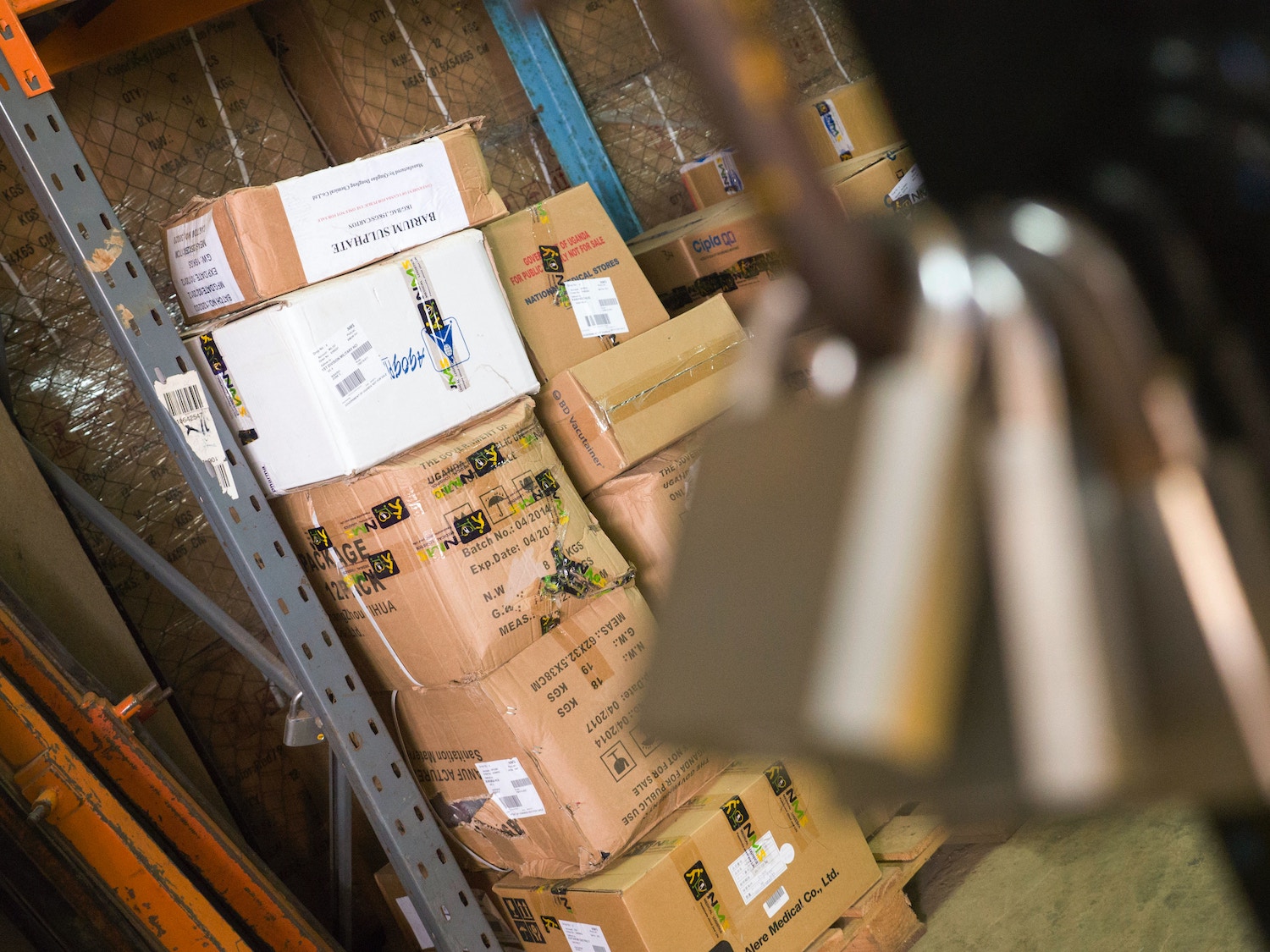Inventory organization ideas to streamline warehouse operations
From maximizing space and integrating inventory management software solutions, here’s how to optimize your processes and enhance operational efficiency. These practical tips will help you run a smooth, well-organized, and safe warehouse operation.

Ioana Neamt

Your warehouse serves as the headquarters of your business operations in more ways than one. This is where you store your products, where you receive and organize shipments, and where you plan out your deliveries.
Meticulous inventory organization is paramount to effective warehouse operations. It helps optimize workflows, reducing time spent looking for products, minimizing errors, and ultimately ensuring timely deliveries and customer satisfaction.
Inventory organization is critical to avoiding issues like overstocking or stockouts, maximizing employee productivity, and, last but not least, ensuring safety and security in the workplace.
Failing to properly organize your inventory can lead to significant shipment delays, employee burnout and errors, and unwanted warehouse accidents. Stocking products haphazardly can thus have a massive impact on your business, so here are some inventory organization ideas to help you streamline warehouse operations.
The benefits of an organized warehouse
There are numerous benefits to keeping your warehouse inventory organized, from employee safety and productivity to enhanced services, improved delivery times, and customer satisfaction. While it might take some time and effort to organize everything efficiently, once you find your groove and everyone is trained to follow a certain procedure, it’ll make a huge difference in your day-to-day operations.
Operational efficiency and faster order fulfillment
Keeping your warehouse inventory organized can reduce the time it takes staff to locate certain products, thus reducing confusion and accelerating the order fulfillment process. If you keep your inventory properly labeled and accounted for, you’ll end up minimizing bottlenecks and enhancing productivity. At the same time, a well-organized warehouse will help avoid errors in picking products and ensure that your clients receive the right orders, eliminating unnecessary returns or complaints.
Minimizing losses and enhancing inventory accuracy
By keeping your warehouse inventory organized, you can avoid pitfalls related to inaccurate item tracking and ensure that you have a real-time overview of all the products you have in stock at any given time.
Proper inventory organization also reduces the risk of product damage or loss, which can help you save money and avoid unnecessary replacements.
Efficient storage systems also help you make the best of available warehouse space, reducing the need to invest in expansions and lowering business costs. Beyond that, proper organization reduces the risk of overstocking or stockouts, allowing you to make informed decisions regarding resource allocation or stock replenishments and purchases.
Employee training and satisfaction
When it comes to inventory management, it’s not all about cost-saving, faster order processing and efficient use of space. It’s also about employee safety, security, productivity, and satisfaction.
Keeping your warehouse inventory well-organized enables you to simplify and streamline the employee training process, and equip your staff with the tools they need to be productive without burning out. At the same time, organizing inventory to avoid clutter and potential workplace accidents keeps your employees safe and satisfied and thus helps you avoid high turnover.
Last but not least, a clean workspace boosts employee morale and creates a positive work environment.

How to organize your warehouse inventory
Organization is the foundation of efficiency, and this applies to warehouse inventory, as well. Organizing your available storage space and all the items you keep in stock will make it easier for your staff to locate and retrieve products, prepare orders, and sort incoming inventory, leading to quicker order processing times and increased overall efficiency.
Keeping pathways and entrances clear and clean and creating separate spaces for incoming and outgoing inventory will allow your employees to move quickly and fulfill tasks with ease and safety.
The less time your people spend searching for products and sorting incoming deliveries, the more time they have to complete other, more essential tasks.
Additionally, keeping your best-selling products on hand, together, and within easy reach will enable staff to retrieve and deploy these items in a timely manner, ensuring customer satisfaction.
Implementing a warehouse inventory management software like Katana can help you organize your inventory effectively. Using SKUs (stock keeping units) and serial numbers to label products and keep track of them in real time can help you locate items quickly and avoid stock problems.
Using an inventory management system, paired with a strategic warehouse layout and well-trained staff, can streamline your entire business operation and keep you one step ahead of the competition.
General organization tips
Implementing SKU numbers is a crucial step to organizing your inventory effectively.
An SKU number is assigned to each individual product, enabling you to track and retrieve anything you keep in stock without frantically searching the entire warehouse. Each SKU number can include different features and characteristics to help you keep track of your products even better, from size and color to price, expiration date, or type.
This will ensure that each SKU number is unique, eliminating potential errors in inventory management. The next step would be to implement inventory management software that incorporates SKU numbers to give you an accurate, real-time picture of what you have in stock.
One of the most popular ways of organizing warehouse inventory is to classify items depending on how profitable or fast-moving they are. This helps you make sure that your best-selling, most sought-after products are always in stock and that you don’t overstock slow-selling products.
You can organize your inventory using the ABC method, where A represents your high-value, low-quantity products, B your moderate-value, moderate-quantity items, and C your low-value, high-quantity items. Or you can use the ABC method to classify products ranging from your best-selling ones to slow-moving items, which allows you to stock your inventory according to consumer demand.
Warehouse layout optimization
Making the best use of available storage space is crucial to efficient inventory management and employee safety and productivity. You don’t just want to pile up boxes and products randomly until you run out of floor room and risk committing errors or exposing staff to potential workplace accidents. You need to carefully assess the space you’re working with and maximize its potential.
What is a warehouse layout?
A warehouse layout refers to the way you physically arrange and organize your operations within a warehouse facility or fulfillment/distribution center. The layout should streamline operations like picking, packing, and receiving while maximizing productivity and ensuring safety for your staff.
A well-thought-out warehouse layout design can make or break the way you handle inventory management for your business, and can have a huge impact on costs, employee satisfaction, but also customer satisfaction.
Why is the layout of warehouses important?
Your warehouse layout design should factor in the types of products you store, the volume of inventory, order processing workflows, and any other factors that are crucial to your business.
If you have a high volume of incoming stock, you’ll need a separate, open area to sort items before assigning them to the right category. If you store products of varying sizes and weights, you’ll want to make the best use of horizontal and vertical space to properly store your inventory.
Depending on the specific needs of your business, you’ll need to thoroughly think about the best way to set up your warehouse layout for maximum efficiency and productivity.

5 picking and receiving tips
There are always some tried and tested methods that can greatly improve your existing processes. Below, you will find 5 tips to streamline your picking and receiving:
- Clear the walkways — Keep entrances and pathways clear at all times to allow employees and machinery to navigate the space with ease and without obstacles. This will allow you to avoid accidents and optimize warehouse workflows.
- Label everything — Label and number everything, and make the system easy to follow by everyone on your staff. Use big letters, product photographs, and information labels to make it easy for employees to locate the right product whenever needed. This ensures that the right products are delivered to the right customers and helps minimize the risk of human error.
- Improve findability — Make sure your best-selling items are easy to find, retrieve, and prepare for shipping. Keep your fastest-moving products upfront for easy access and your slowest-moving products in the back to optimize the order fulfillment process and ensure fast deliveries.
- Group your products — Place similar items near each other and make sure that items that are usually purchased together are located in the same area. If you sell products that are part of a kit, place them next to each other to minimize the time your employees spend searching for these items. The way you set up your product categories should be based on your sales metrics and trends.
- Leave a working area — Keep a separate area to receive, unbox, sort, and label incoming stock. Your stockroom or stock receiving area should be open and uncluttered so you are always prepared to receive incoming shipments without running out of space. Prioritize this process and move items out of this sorting area as quickly as possible to clear the path for new shipments and avoid bottlenecks. The same goes for your outgoing shipments — create a separate area to pack and prepare orders and keep it clean and neat to avoid sending out the wrong products or packages to your clients.
Storage tips
One of the most important inventory organization ideas is to make the best possible use of vertical space. Warehouses usually boast high ceilings, and you should maximize their potential by stacking products vertically instead of just horizontally. But make sure you prioritize safety by placing the heaviest products close to the floor and the lightest products higher up towards the ceiling.
Invest in quality storage solutions that help you keep everything neatly organized and easy to locate at any given time.
Use racks, bins, cabinets, drawers, shelves, boxes, and other types of storage units to organize your inventory as efficiently as possible. Make sure you invest in mobile storage units so that you can adjust and move sections around depending on sales or seasonal trends.
For instance, you’ll want to move products that are part of a Christmas or Black Friday sale within easy reach to improve order processing times and ensure timely delivery to your clients.
Safety and security tips
- Keep everything clean, neat, and organized to help your staff navigate the warehouse facility with ease and locate products efficiently and safely
- Keep heavy boxes and products close to the floor to avoid collapses and workplace injuries
- Ensure a constant, comfortable temperature, keep the space ventilated, and ensure good air quality for the items you keep in stock, as well as for the health and wellbeing of your staff
- Provide excellent lighting to allow your employees to navigate their way, locate products, and read or scan labels without difficulty
- Always clean up the sorting area after picking, receiving, or deploying inventory
- Provide your staff with essential gear like protective gloves, hats, vests, masks, and any other types of personal protective equipment they may need
- Ensure your staff has the tools they need to do their jobs, such as forklifts, headsets and other communication tools, scanners, etc. and keep all of these tools up-to-date with regulatory requirements
- Don’t allow guests or anyone who’s not part of your staff to roam without express permission or supervision

Manage and organize your inventory with Katana
When it comes to warehouse inventory organization, a fast, secure, and reliable inventory management software can make all the difference in the world. With Katana, you can get real-time insight into your inventory, so you know when it’s time to replenish stock or prioritize certain products that are selling fast. With a tool like Katana, you’ll never lose track or misplace an item in your warehouse, and you’ll avoid issues like stockouts or overstocking, keeping your costs in line and your customers satisfied.

Ioana Neamt
Table of contents
Get inventory trends, news, and tips every month
Get visibility over your sales and stock
Wave goodbye to uncertainty by using Katana Cloud Inventory for total inventory control
